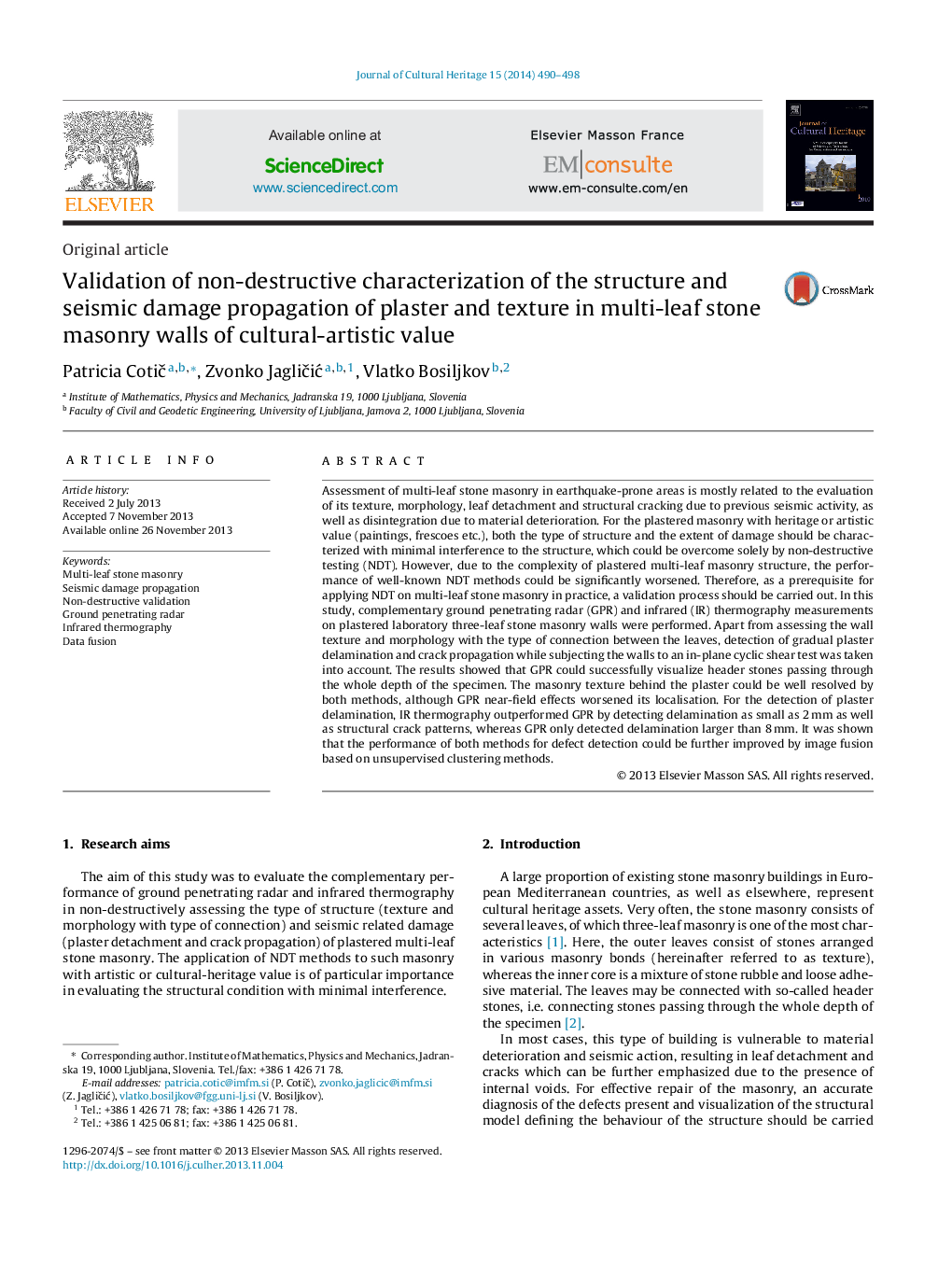| کد مقاله | کد نشریه | سال انتشار | مقاله انگلیسی | نسخه تمام متن |
|---|---|---|---|---|
| 1038054 | 944200 | 2014 | 9 صفحه PDF | دانلود رایگان |
Assessment of multi-leaf stone masonry in earthquake-prone areas is mostly related to the evaluation of its texture, morphology, leaf detachment and structural cracking due to previous seismic activity, as well as disintegration due to material deterioration. For the plastered masonry with heritage or artistic value (paintings, frescoes etc.), both the type of structure and the extent of damage should be characterized with minimal interference to the structure, which could be overcome solely by non-destructive testing (NDT). However, due to the complexity of plastered multi-leaf masonry structure, the performance of well-known NDT methods could be significantly worsened. Therefore, as a prerequisite for applying NDT on multi-leaf stone masonry in practice, a validation process should be carried out. In this study, complementary ground penetrating radar (GPR) and infrared (IR) thermography measurements on plastered laboratory three-leaf stone masonry walls were performed. Apart from assessing the wall texture and morphology with the type of connection between the leaves, detection of gradual plaster delamination and crack propagation while subjecting the walls to an in-plane cyclic shear test was taken into account. The results showed that GPR could successfully visualize header stones passing through the whole depth of the specimen. The masonry texture behind the plaster could be well resolved by both methods, although GPR near-field effects worsened its localisation. For the detection of plaster delamination, IR thermography outperformed GPR by detecting delamination as small as 2 mm as well as structural crack patterns, whereas GPR only detected delamination larger than 8 mm. It was shown that the performance of both methods for defect detection could be further improved by image fusion based on unsupervised clustering methods.
Journal: Journal of Cultural Heritage - Volume 15, Issue 5, September–October 2014, Pages 490–498
